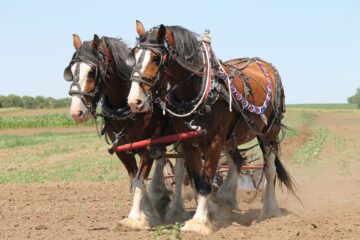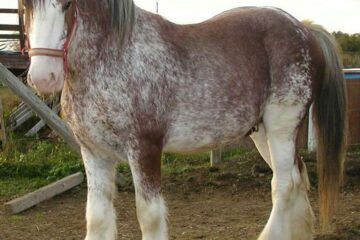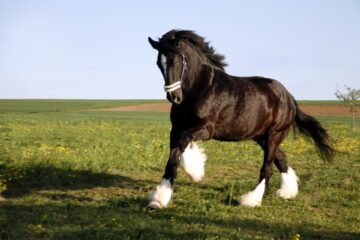In this comprehensive guidance, learn about the Appaloosa horse breed’s interesting history, distinctive qualities, and cultural significance.
If you like horses, you’ve probably come across several breeds that capture you with their unique qualities and history. Among these, the Appaloosa horse breed stands out as a living canvas of hues and a tribute to equestrian heritage’s rich tapestry. With mysterious beginnings and a particular appearance that has been adored for ages, the Appaloosa breed continues to pique the interest of horse aficionados all over the world.
Unveiling the Origins
The Appaloosa horse, famous for its unique coat patterns and ancient lineage, is thought to originate from the Palouse region in the Pacific Northwest of the United States. The lush grasslands of this area were home to the Nez Perce Native American tribe, who significantly influenced the breed’s history.
The Nez Perce Connection
The Nez Perce people had a close relationship with the Appaloosa horse, using it not only as a source of transportation but also as a cultural icon. People highly valued these horses for their endurance, intelligence, and ability to adapt to the diverse terrain of the region.
A Coat of Many Colors
The Appaloosa breed’s most appealing characteristic is probably its coat patterns. Each horse has a distinct and enticing appearance that tells a narrative of generations past, from the stunning “leopard” markings to the beautiful “blanket” pattern.
Types of Coat Patterns
Leopard Complex: This pattern resembles a leopard’s spots, with a white base coat covered in distinctive dark spots.
Blanket: The horse has a solid base coat with a contrasting color that covers its hindquarters like a blanket.
Roan: A mixture of white hairs with the base coat, creating a beautiful roan effect.

Life span of Appaloosa
The Appaloosa has a life expectancy of 25 to 35 years. Appropriate care, such as regular exercise and routine vaccinations, can help your Appaloosa live a long and healthy life.
You may also help your Appaloosa’s health by feeding them a good diet. Forage should account for 1% to 2% of a horse’s body weight on a daily basis. Always feed your horse high-quality hay that is free of dust and mold. If you frequently exercise your Appaloosa, you may need to add grains to their diet.
The Appaloosa’s Rebirth
The Appaloosa breed threatened near-extinction throughout the nineteenth century due to a variety of circumstances, including fighting with settlers and the Nez Perce War. However, a committed group of breeders and fans gathered to revitalize and preserve this wonderful species.
The Appaloosa Horse Club
The Appaloosa Horse Club, founded in 1938, was critical in preserving the breed’s legacy. The association created breed standards, supported good breeding techniques, and staged events to highlight the flexibility of the breed.
Embracing Diversity
The appeal of the Appaloosa breed extends beyond its outward look. These horses possess amiable and intelligent personalities, excelling across a range of disciplines from trail riding to competitive sports.
Versatility in Sports
Appaloosas have excelled in a wide range of equestrian sports, including:
- Show Jumping
- Dressage
- Barrel Racing
- Western Pleasure
Preserving a Legacy
Efforts to preserve and protect the Appaloosa breed have not only been limited to the United States but have also spread globally. Breed enthusiasts around the world have recognized the breed’s historical significance and captivating qualities.
International Appeal
Countries such as Australia, Canada, and Europe have embraced the Appaloosa breed, establishing their own Appaloosa organizations and breeding programs.
Champion and Celebrity Appaloosa Horses
Knobby, a horse born in 1918, is regarded as the foundation sire of today’s Appaloosa breed. His herd was not harmed by the confiscation by the US government, hence he was a major donor to the breed’s foundation stock.
Sundance was an Appaloosa stallion with leopard spots that was born in 1933. His descendants still wear his gorgeous coat pattern. Sundance’s lineage includes thoroughbred and mustang horses.
Red Eagle, born in 1946, was another important foundation stallion. He was actually part Arabian, as it was usual to mix other light horse breeds into the Appaloosa recovery effort. Today, Red Eagle may be seen in many Appaloosa pedigrees.
The Enigmatic Future
Looking ahead, the fascination of the Appaloosa breed is as strong as ever. The mystery of the Appaloosa horse breed lingers, with a legacy intricately connected with human history and a remarkable appearance that continues to fascinate hearts.
Conclusion
Few breeds of horses have the mystique and attraction of the Appaloosa horse. The Appaloosa’s journey is one of resilience and appreciation, from its origins among the Nez Perce tribe through its resuscitation through dedicated breeders. The breeds eye-catching coat patterns and adaptability in a variety of disciplines cement its place in the hearts of horse fans worldwide.
Read More about



0 Comments